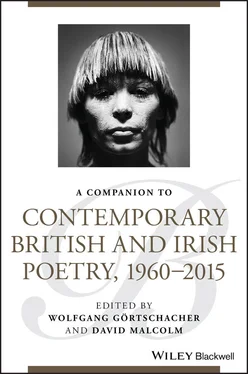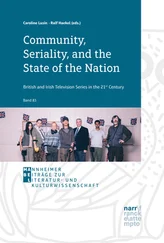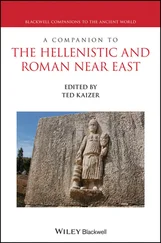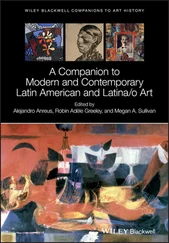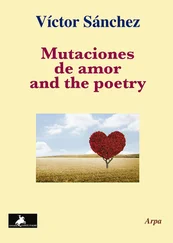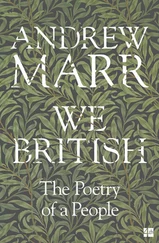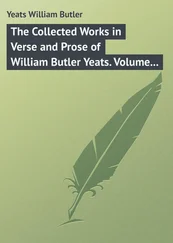There is no excuse for such ignoring of the technical. A wide range of approaches to formal and technical aspects of verse is available to the contemporary commentator. Indeed, some have been available for a long time. Geoffrey Leech's great A Linguistic Guide to English Poetry (1969) is still very helpful in any discussion of poetry. Marina Tarlinskaja's English Verse: Theory and History dates from 1976. The first edition of Harvey Gross's and Robert McDowell's fine Sound and Form in Modern Poetry appeared in 1964 (the second edition dates from 1996). The following is just a selection of more recent texts that seem particularly useful in the matter of analysis and interpretation of poetry:
Derek Attridge, Poetic Rhythm (1995)
Philip Hobsbaum, Metre, Rhythm and Verse Form (1996)
David Baker, ed., Meter in English: A Critical Engagement (1996)
Timothy Steele, All the Fun's in How You Say a Thing (1999)
Nigel Fabb and Morris Halle, Meter in Poetry: A New Theory (2008)
Martin Duffell, A New History of English Metre (2008)
Christoph Küper, ed., Current Trends in Metrical Analysis (2011)
Not all of these are easy books to read, nor are the systems of analysis they propose entirely (or at all) compatible with each other. But they are there, and they propose ways of analyzing verse that pay due attention to the specifics of the poetic text. Gross and McDowell (1996) lay down the challenge to those who would talk about poetry:
We venture that rhythmic structure neither ornaments conceptual meaning nor provides a sensuous element extraneous to meaning: prosody is a symbolic structure like metaphor and carries its own weight of meaning.
(2–3)
Our view is that meter, and prosody in general, is itself meaning. Rhythm is neither outside a poem's meaning nor an ornament to it.
(10)
In his essay “A Return to Form” (2008), Derek Attridge notes what he sees as a return to formal concerns in literary studies, after a dominance of (useful and illuminating) historical and culture‐focused approaches to literature over the preceding 30 years. “Since 2005,” he writes, “the signs of a revitalization of formal study have multiplied” (565). Attridge has reservations about some recent returns to form (for example, those undertaken by Terry Eagleton, Tom Paulin, and Helen Vendler), on the grounds of lack of consistency and accuracy. But he welcomes a concern with technique, indeed, a concern with form, a renewed attention to the “formal analysis” (573) that is the poem. He argues that such an approach is ethically appropriate, but is also accurate, grounded, and appropriate in literary studies. One should note that Attridge is certainly not arguing for a disregard of topic or reference to extratextual context. He is, however, urging that a good reading is one that also considers textual configurations, shapings, and substances. Such an interest in technique and form is also illustrated by Angela Leighton's illuminating On Form: Poetry, Aestheticism, and the Legacy of a Word (2007), which charts some of the vicissitudes of formalist and neoformalist approaches to the literary text.
Here are analyses of 20 poems that we feel to be of substance from the period 1960 through 2015. The poems are discussed in chronological order. They are poems by well‐known and less well‐known poets.
Philip Larkin, “An Arundel Tomb” (1964) (Larkin 1964, 45–46)
The title of this poem is immediately striking. Why the indefinite article? Is it one tomb among many? Are there other examples of such tombs, with the meanings added by the poem? Further, the title refers to a documented monument, and the text itself offers an accurate description of it, except for the assertion that “little dogs” lie at the feet of the couple. A dog lies at the feet of the woman, a lion at the feet of the man.
The subject matter is clearly and rationally set forth over seven stanzas of the same length: the tomb is described (stanzas 1 and 2); the speaker's response and direct reflection are given (stanzas 2–5); general reflection on time, change, and endurance follows (stanzas 6–7). An act of observation and reflection on the part of the speaker is recorded, but that act is consistently impersonal (line 8: “the eye”; line 11: “one sees”; line 42: “us”). Order and consistency are embodied in technical aspects of the text. Each stanza contains six lines. All lines are eight syllables in length. The rhyme scheme is largely consistent (abbcac). Iambs and diambs dominate in the poem. All such features are appropriate in a text that celebrates traditional married love, unity in death, and the survival of a feudal and aristocratic past.
However, this poem is also a technically disordered piece. For example, while iambs and diambs dominate stanza 1, several other feet are prominent (amphibrachs and amphimacers). Lines 5 and 6 both end in four beat feet that can only be construed as diambs with some difficulty, and are best understood as fourth paeons (xxx/). In addition, foot divisions are uncertain at the ends of lines 2, 3, and 4. Are these amphimacers or in line 2 a single‐stress foot followed by an iamb, and in lines 3 and 4 trochees followed by single‐stressed feet? In a poem about unity, isolated single stresses carry a contestatory semantic weight, while in a poem about tradition and order, metrical irresolution is surely disruptive. In fact, several lines can only be scanned as iambic if the reader places the values of the metronome over natural speech, for example, stanza 3, line 5 and stanza 7, line 5. Further, the first lines of stanzas 6 and 7 both contain metrically monstrous feet: “at their identity” (xxx/xx) and “has transfigured them into” (xx/xxxx)—although other scansions are possible.
Further disorder can be seen in phonological patterning, which in this poem is always local, and in a rhyme scheme that does fracture on occasion, for example, the anisobaric rhymes in lines 10 and 12, and in lines 14 and 15. This is particularly clear in the last, seemingly triumphant stanza: lines 37 and 41 (“into / true”) and lines 38 and 39 (“fidelity / to be”). It is surely important that the concluding “love” does not actually rhyme fully with the preceding “prove.” In addition, in a poem celebrating unity, the persistent recurrence of enjambment (11 examples, plus the radical enjambment between stanzas 4 and 5) must disturb. One can also notice a further degree of uncertainty in the poem's puns: inter alia “proper habits” (line 3), “faithfulness in effigy” (line 14), and “blazon” (line 40). Paronomasia disrupts as much as enjambment: things are not what they seem.
Attention to technique reveals a much more ambiguous poem than a superficial reading brings. “Untruth” and disorder become as important as the survival of tradition and “love.” What appears as a celebration of tradition becomes something much more questioning and fragmentary. Are there other such monuments, English history incarnate, seemingly solid and unambiguous, that reveal themselves as complex and ambiguous?
Lee Harwood, “The Sinking Colony” (1968–1969) (Harwood 2004, 153–155)
Ambiguity in history is central to Harwood's poem. Title and epigraph enact the equivoque of the rest of the poem. What is the sinking colony? Is the end and insubstantial nature of empire announced by it? Why is the epigraph a quotation from a translation of André Gide's Les Faux‐monnayeurs ? Is the factitious nature of any account signaled from the very start?
The poem itself is a designedly broken thing, the meaning of which—apart from brokenness—must remain unclear. It is divided into six sections. Sections 1, 2, 3, and 5 are in prose, without any obvious phonological or rhythmic patterning. A majority of sentences are without terminal punctuation (12 out of 21). Section 2 also contains three lines of broken verse (six noncohesive phrases, with a space between each of the first pair and the second pair). Section 4 consists of verse, but the lines are irregular in length (from 14 to 4 syllables) and in numbers of main stresses per line (from 7 to 2). It is very hard to see any traditional metrical patterning. The same is the case with the verse in section 6.
Читать дальше
